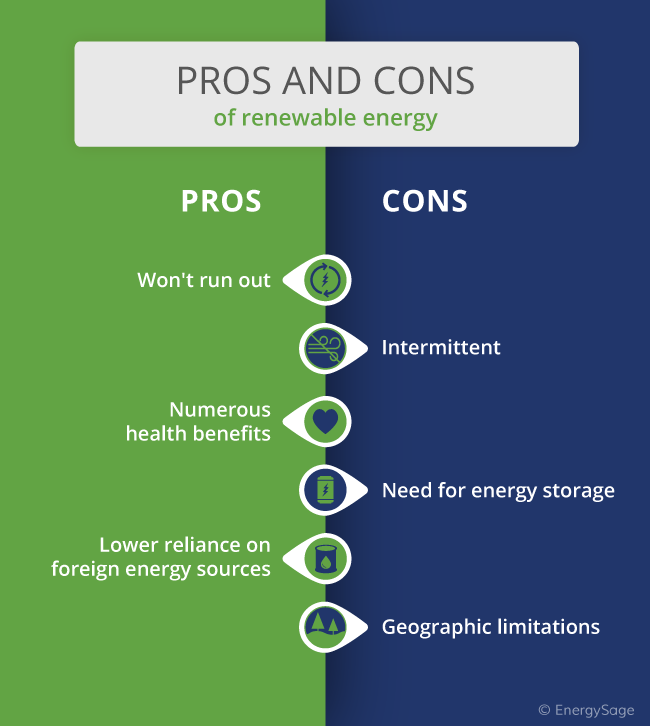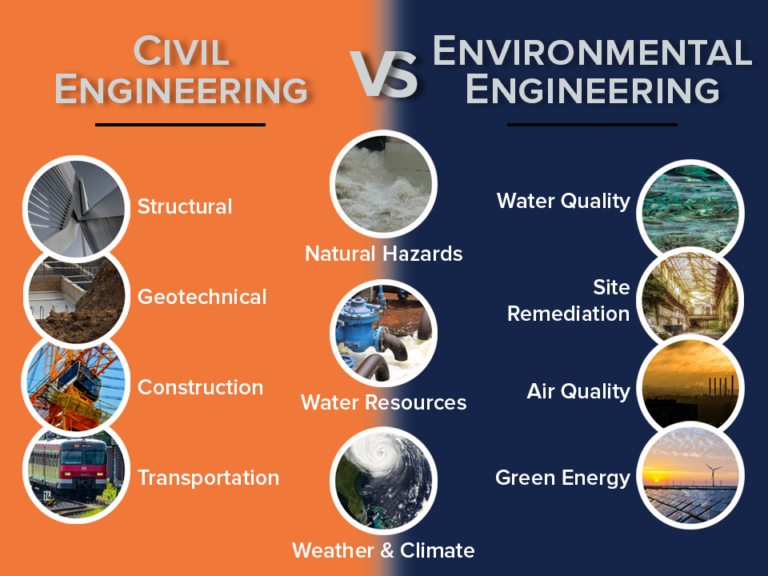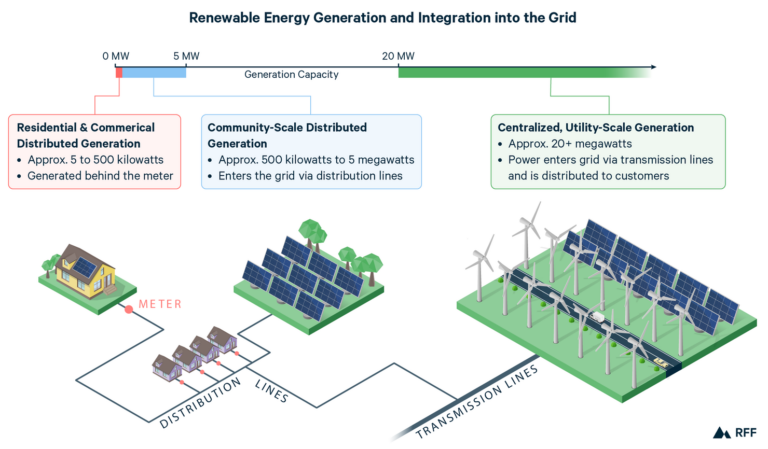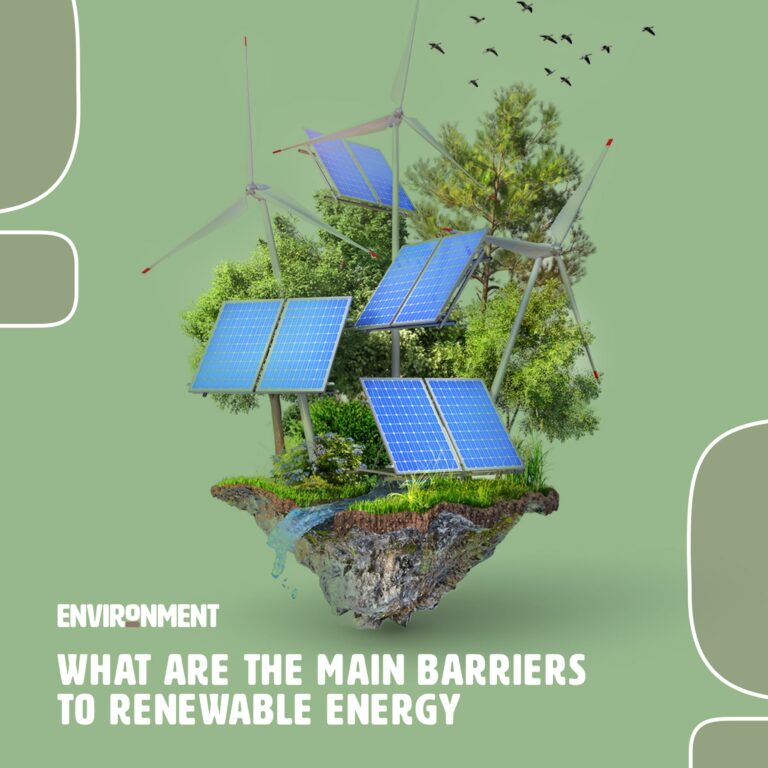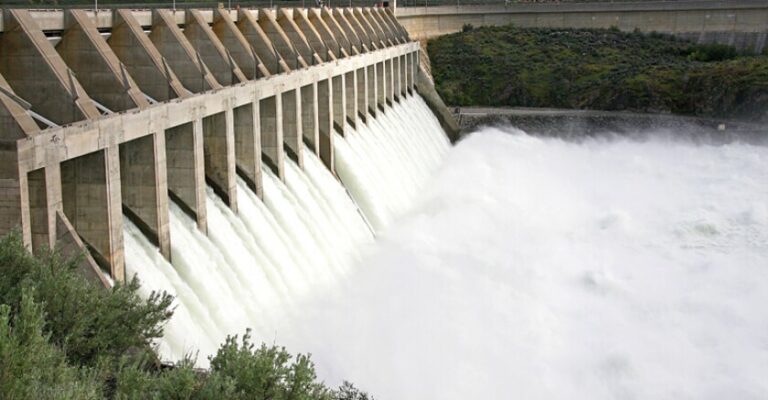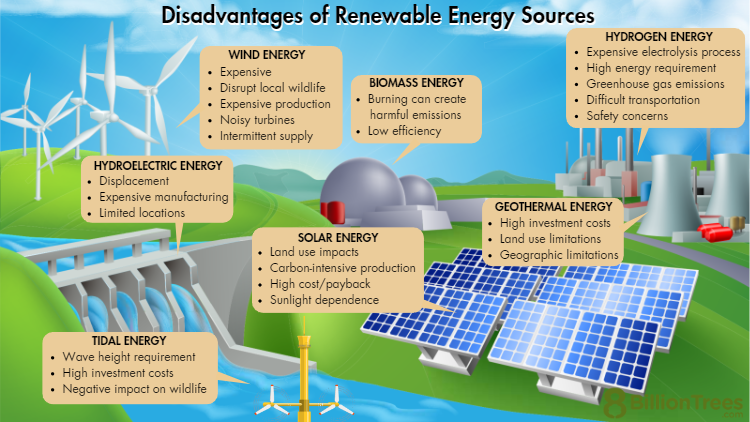Why Are Renewable Sources Of Energy Better Than Nonrenewable Sources?
Picture a world where energy is clean, abundant, and doesn’t harm the environment. Sounds amazing, right? Well, that’s where renewable sources of energy come in. But you might be wondering, “Why are renewable sources of energy better than nonrenewable sources?” Well, let’s dive in and find out!
When we think of nonrenewable sources of energy like fossil fuels, we’re talking about resources that take millions of years to form, and once they’re gone, they’re gone for good. On the other hand, renewable sources of energy, such as solar, wind, and hydroelectric power, can be replenished naturally in a relatively short timeframe.
Renewable energy is like a superhero – it doesn’t produce harmful greenhouse gas emissions, unlike its nonrenewable counterparts. These emissions are major contributors to climate change, and by harnessing renewable sources of energy, we can reduce our carbon footprint and help protect our planet for future generations.

Why Are Renewable Sources of Energy Better Than Nonrenewable Sources?
Renewable sources of energy have gained increased attention in recent years due to their numerous advantages over nonrenewable sources. With the global focus on sustainability and reducing environmental impact, renewable energy offers a clean, reliable, and sustainable alternative to traditional fossil fuels. In this article, we will explore why renewable sources of energy are better than nonrenewable sources, discussing their environmental benefits, economic advantages, and long-term viability.
Environmental Benefits of Renewable Energy
Renewable sources of energy, such as solar, wind, hydro, and geothermal, offer significant environmental benefits compared to nonrenewable sources like coal, oil, and natural gas. One of the key advantages is the reduction in greenhouse gas emissions. Unlike fossil fuel-based energy production, renewable sources emit little to no greenhouse gases during operation. This helps mitigate climate change and reduce air pollution, leading to cleaner and healthier environments.
Furthermore, renewable energy does not deplete natural resources. Fossil fuels are finite resources that take millions of years to form, and their extraction has devastating effects on the environment. In contrast, renewable sources are abundant and readily available, with no risk of depletion. This not only ensures a more sustainable energy supply but also reduces the negative environmental impact associated with the extraction and transportation of fossil fuels.
Another significant environmental advantage of renewable energy is its minimal water usage. Nonrenewable sources require large quantities of water for processes like cooling and steam generation. This leads to water scarcity in many regions and puts a strain on freshwater resources. In contrast, most renewable sources have minimal water requirements, reducing stress on water systems and ecosystems.
Economic Advantages of Renewable Energy
The shift towards renewable energy also brings numerous economic advantages. Investing in renewable sources creates jobs and stimulates economic growth. The renewable energy sector has experienced rapid expansion, providing employment opportunities across a wide range of industries, from manufacturing and installation to research and development. This not only reduces unemployment rates but also fosters innovation and technological advancements.
Additionally, the cost of renewable energy has been steadily decreasing over the years, making it increasingly competitive with traditional fossil fuel-based energy. The installation and maintenance of renewable energy systems have become more affordable, thanks to advancements in technology and economies of scale. Moreover, unlike fossil fuels that are subject to price fluctuations and geopolitical tensions, renewable energy sources offer price stability and long-term energy security.
Furthermore, investing in renewable energy reduces reliance on imported fossil fuels, enhancing energy independence for countries. This reduces geopolitical risks associated with fossil fuel dependency and strengthens national security. By diversifying their energy sources, countries can mitigate the vulnerability of their energy infrastructure to external factors and fluctuations in global fuel markets.
The Long-Term Viability of Renewable Energy
Renewable energy holds immense potential for long-term viability and sustainability. Unlike nonrenewable sources, renewable energy is infinite and constantly replenished by natural processes. This means that as long as the sun shines, the wind blows, and water flows, we will have a consistent and constant supply of renewable energy.
The development of renewable energy technologies, such as advanced solar panels and wind turbines, continues to drive efficiency improvements and increase energy yield. This translates into higher energy generation from renewable sources, making them increasingly viable for widespread deployment. In contrast, nonrenewable sources face challenges such as declining reserves, increased extraction costs, and environmental regulations that impede their long-term sustainability.
Furthermore, renewable energy sources are scalable and adaptable to various geographical locations and energy demands. Solar panels can be installed on rooftops, wind turbines can be erected in windy regions, and hydropower plants can be constructed near rivers. This flexibility allows for decentralized energy production, reducing transmission losses and enhancing grid resilience.
In conclusion, renewable sources of energy offer numerous environmental, economic, and long-term benefits compared to nonrenewable sources. By reducing greenhouse gas emissions, conserving natural resources, creating employment opportunities, ensuring price stability, and guaranteeing long-term energy security, renewable energy is a crucial component of a sustainable future. Investing in and transitioning towards renewable energy is not only a responsible choice for the environment but also a smart economic decision for individuals, businesses, and governments alike.
Key Takeaways – Why are renewable sources of energy better than nonrenewable sources?
- Renewable energy sources, like solar and wind power, are better for the environment because they produce fewer greenhouse gas emissions.
- Renewable sources can be replenished naturally, unlike nonrenewable sources like fossil fuels, which will eventually run out.
- Using renewable energy can help reduce our dependence on foreign oil and increase energy independence.
- Renewable sources can create jobs in industries like solar panel manufacturing and wind turbine installation.
- Switching to renewable energy can promote innovation and the development of new technologies to improve sustainability.
Frequently Asked Questions
Renewable sources of energy are gaining popularity due to their numerous advantages over nonrenewable sources. From environmental benefits to long-term sustainability, these sources offer a more promising future. Read on to learn more about why renewable sources of energy are better than nonrenewable sources.
How do renewable sources of energy help the environment?
Renewable sources of energy, such as solar and wind power, have a minimal impact on the environment compared to nonrenewable sources like fossil fuels. Renewable sources do not release harmful greenhouse gases, which contribute to climate change. Additionally, they do not produce toxic byproducts that can pollute the air, water, and soil. By harnessing renewable energy, we can reduce our carbon footprint and mitigate the negative effects of climate change.
Moreover, renewable sources are sustainable and can be replenished naturally over time, unlike finite resources like coal or oil. By using renewable sources, we can preserve natural resources and minimize the depletion of nonrenewable fuels, ensuring a better future for generations to come.
Are renewable sources of energy more cost-effective?
Initially, the installation costs for renewable energy systems may seem high, but in the long run, they prove to be more cost-effective. Once the infrastructure is in place, renewable energy sources like solar or wind power can generate electricity without the need for constant fuel inputs. This eliminates the need for costly and finite resources like coal or natural gas, reducing energy bills over time.
Moreover, renewable sources of energy are becoming increasingly efficient and affordable, thanks to advancements in technology. The installation and maintenance costs are decreasing, making renewable energy more accessible to individuals and businesses. Additionally, governments often provide incentives and subsidies to encourage the adoption of renewable energy, further reducing the financial burden of transitioning to these sources.
How do renewable sources of energy contribute to energy security?
Renewable sources of energy, such as solar and wind power, are abundant and widely available. Unlike nonrenewable sources like oil or gas, which may be sourced from politically unstable regions, renewable energy can be harnessed locally. This reduces dependence on foreign energy resources and enhances energy security.
Moreover, renewable sources are reliable and can provide a constant supply of electricity. For example, solar panels can generate electricity even on cloudy days, and wind turbines can harness wind power consistently. By diversifying our sources of energy and relying more on renewables, we can ensure a stable and secure energy supply for our communities and countries.
How do renewable sources of energy create job opportunities?
The renewable energy sector is a significant source of job creation. Transitioning to renewable sources of energy requires new infrastructure development, which leads to the creation of jobs across various sectors. From engineers and technicians involved in building and maintaining renewable energy systems to manufacturers producing solar panels and wind turbines, these industries offer employment opportunities.
Furthermore, as renewable energy technologies continue to advance, the demand for skilled workers in this field will increase. This provides a chance for individuals to acquire new skills and contribute to the growth of a sustainable economy. Investing in renewable energy not only helps the environment but also stimulates economic growth by creating employment opportunities.
Can renewable sources of energy meet the world’s energy demands?
Yes, renewable sources of energy have the potential to meet the world’s energy demands. The sun and wind, for example, are virtually limitless sources of energy. With the right infrastructure and technological advancements, we can harness and store renewable energy at a large scale, ensuring a reliable supply.
Currently, renewable energy sources are rapidly growing and becoming an integral part of the global energy mix. Governments and organizations are investing in research and development to improve energy storage and transmission. Innovation and collaboration are key to tapping into the full potential of renewable sources and meeting the growing energy demands sustainably.
Difference between Renewable and Nonrenewable Resources
Summary
Renewable sources of energy, like solar and wind power, are better than nonrenewable sources for a few important reasons. First, they will never run out because they are constantly replenished by nature. Second, they are much cleaner and produce less pollution, which is good for the environment. Third, they can help reduce our dependence on fossil fuels and contribute to a more sustainable future. So, it makes sense to invest in and use renewable energy sources whenever possible.
In contrast, nonrenewable sources of energy, such as coal and oil, are limited and will eventually be depleted. Moreover, they contribute to air and water pollution, which can harm our health and the health of the planet. Reliance on these sources also makes us vulnerable to price fluctuations and geopolitical tensions. By choosing renewable energy, we can ensure a more reliable, cleaner, and sustainable energy system for ourselves and future generations.

